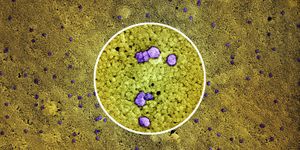The effect of social connection on health outcomes
In a recent study published in BMC Springer Nature, researchers delved into the intricate relationship between social connection and mortality outcomes, leveraging the extensive dataset of the UK Biobank. The investigation focused on both functional and structural components of social connection, exploring their impact on shaping health outcomes.
The functional components of social connection they measured were the ability and frequency to confide in someone, and often feeling lonely. The structural components they measured were the frequency of seeing family/friends, weekly group activities, and living alone. Independently, both components exhibited associations with all-cause and cardiovascular mortality.
The findings unveiled a dose-response relationship, revealing that the presence of any of the three structural components or functional isolation corresponded to lower all-cause mortality. Particularly noteworthy was the observation that individuals reporting never having friends and family visits, lacking weekly group activity, and living alone without functional isolation exhibited the highest mortality rates.
The frequency of friends and family visits emerged as a critical factor. The study indicated that, up to a monthly threshold, increasing visit frequencies correlated with lower all-cause mortality.
The participants that reported a lower social connection were more likely to be from a minority ethnic group, have a higher BMI, and engage in behaviors such as chronic smoking, high alcohol intake, and low physical activity. The ability to have a confidant and confide in someone close was associated with lower all-cause cardiovascular disease mortality. The same association was seen with feeling lonely; compared to those that didn't feel lonely, participants that reported they felt lonely were associated with higher all-cause mortality and cardiovascular mortality.
Structural isolation alone exhibited higher all-cause mortality than functional isolation alone. However, the combination of both components resulted in the most pronounced adverse health outcomes. The study suggested an additive interaction, emphasizing the need to consider both functional and structural aspects concurrently.
The study's implications extend to personalized advice, interventions, and policy considerations. Tailoring strategies to address specific aspects of social connection could be pivotal in mitigating health risks. The identification of individuals living alone, especially those with additional markers of structural isolation, emerged as a potential target for focused support.
Sources: BMC Springer Nature








